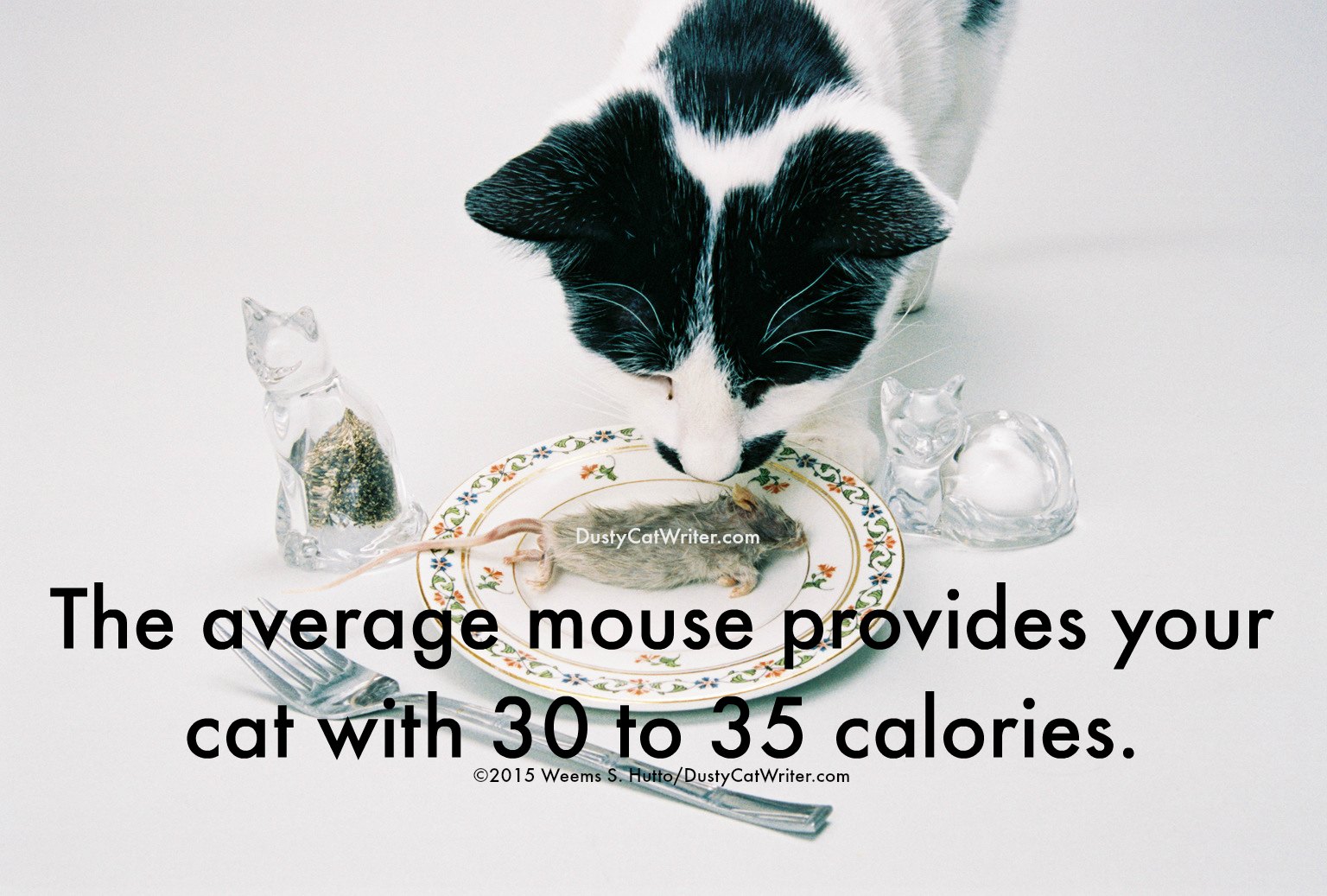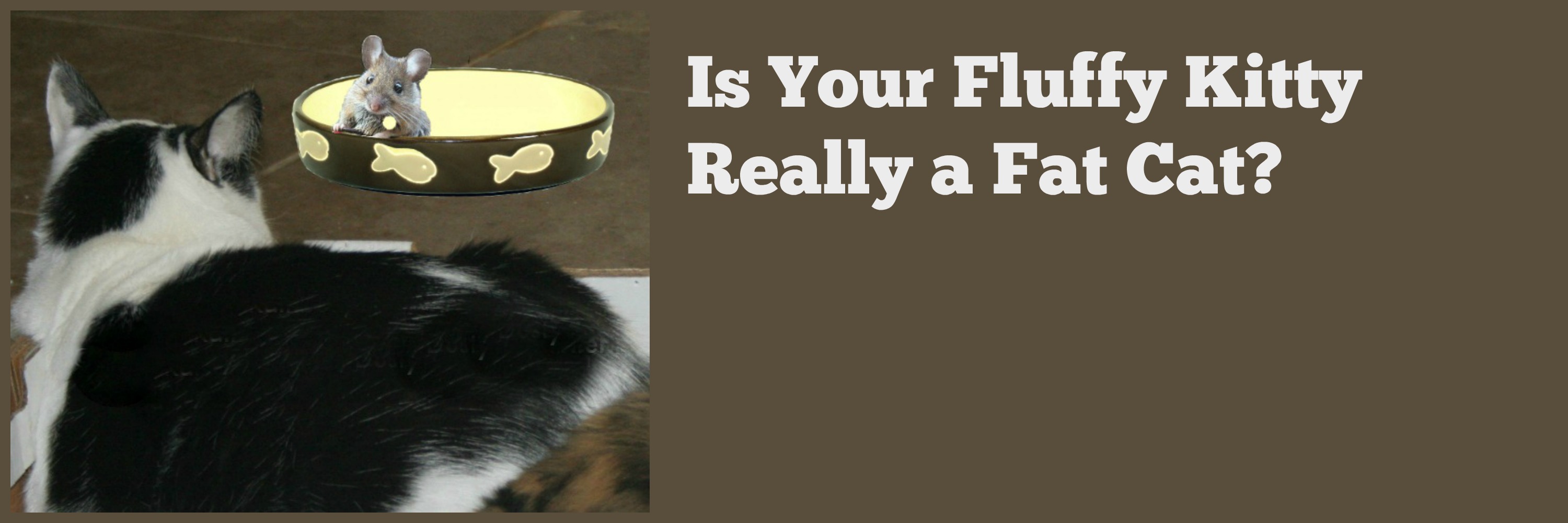 Are you making Fluffy a fat cat? I’ll go out on a limb and say, “Probably yes.”
Are you making Fluffy a fat cat? I’ll go out on a limb and say, “Probably yes.”
How can you tell if your kitty isn’t just fluffy, but rather portly? Gently slide your fingers along his rib cage. You should be able to feel his rib through a thin layer of fat without having to press down. If he’s too skinny, you’ll instantly feel and see his ribs. If he’s too fat, you won’t be able to feel his ribs through all the fat.
What would he be eating if he had to hunt for his living?
Margie Scherk, DVM, ABVP, who conducted nutrition seminars at the Greenies Feline Influencer Summit in Franklin, Tennessee, said if you feed your kitty by only ten pieces of kibble per day more than his body needs, he can gain one pound of fat in a year! That’s 10% of a 10-pound kitty’s body weight. (Imagine a 150-pound human putting on 15 pounds. You do that for two or three years in a row and you’re in trouble.) For a cat to pork on one pound of fat a year for three years, and that’s bad news.
A cat living in the wild would hunt and eat up to ten mouse-sized meals a day. The average mouse contains between 30-35 calories. But Dr. Scherk adds only one out of 15 hunting expeditions results in a meal, so a natural cat spends most of his day running, jumping and climbing trees. All that activity burns a lot of calories.
“Regulating your cat’s diet and encouraging regular exercise are the best ways to maintain your cat’s body weight,” the late Dr. Lorie Huston told me.
Provide your inside cat with small, meals high in protein and fat eight to 10 times a day.
 But, no crash diet for Fluffy. Work with your vet to design a gradual weight loss program. Rapid weight loss can cause potentially fatal fatty liver disease (hepatic lipidosis.)
But, no crash diet for Fluffy. Work with your vet to design a gradual weight loss program. Rapid weight loss can cause potentially fatal fatty liver disease (hepatic lipidosis.)












Recent Comments